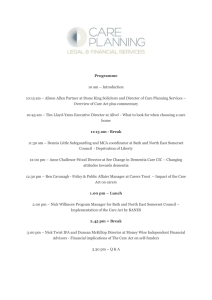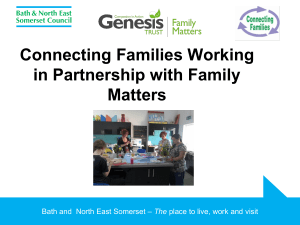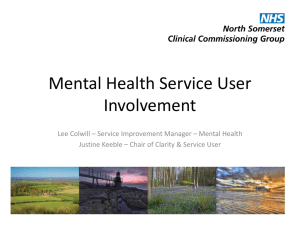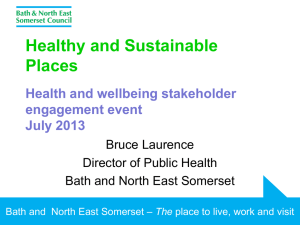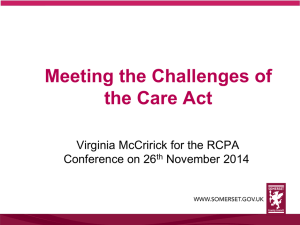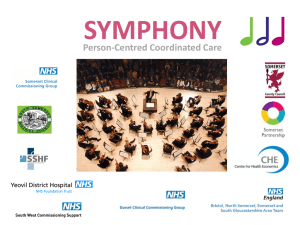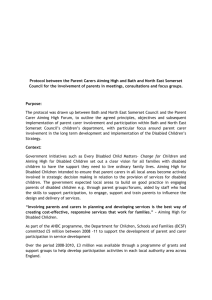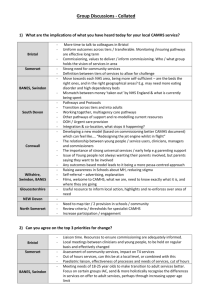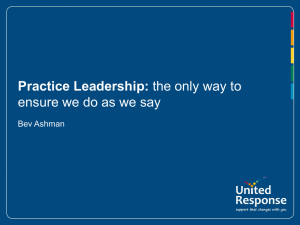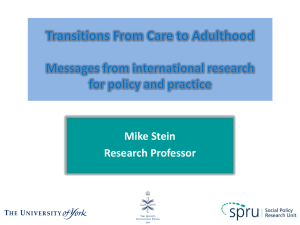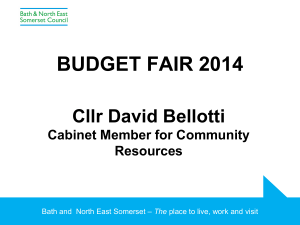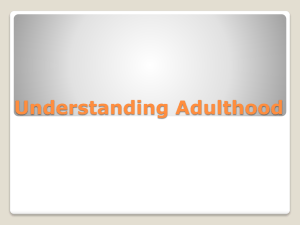Transition Champion - Bath and North East Somerset Council
advertisement
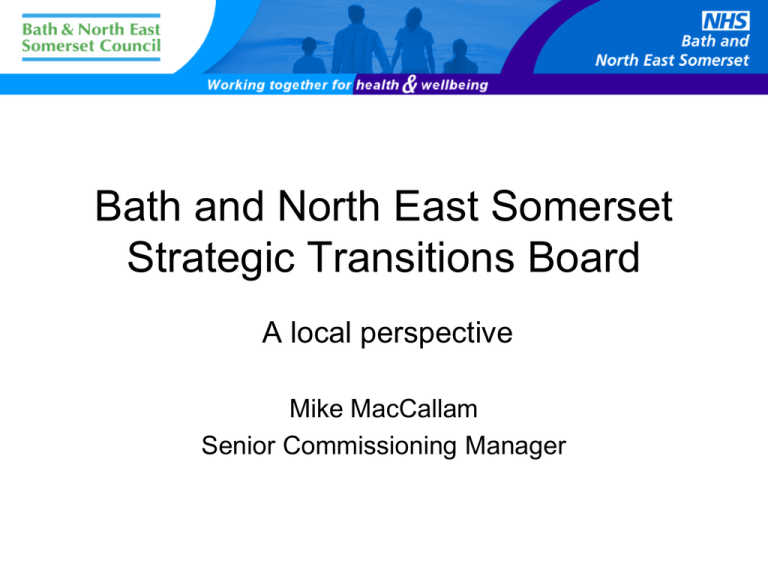
Bath and North East Somerset Strategic Transitions Board A local perspective Mike MacCallam Senior Commissioning Manager • Background • Role of the Strategic Transition Board • Transition Protocol • Role of the ‘Transition Champion’ • Training Strategy • Transition Pathway Background • The Strategic Transition Board was originally established following a review commissioned from an independent organisation • The report found a number of barriers to effective service delivery, including: – – – – lack of strong leadership and commitment to transition planning processes, no strategic overview Mixed criteria for accessing services Lack of understanding of roles and responsibilities of the different sectors and agencies involved in the transition – Lack of resources and clear, collated and easily accessible information and communication systems. – Lack of person centred planning and user involvement BANES Strategic Transition Board • To ensure that appropriate and effective arrangements are in place to meet the needs of young people with physical and/or learning disabilities and/or with mental health problems aged between 14 – 25, as they move from childhood to adulthood • Senior Management Chair • Multi agency representation • ‘Core Group’ to drive work plan National Transition Support Programme • 2008/09 – National Transition Support Programme launched • One of the 5 work streams that made up the DCSF/DH Aiming High for Disabled children agenda to transform disabled children’s services • Self Assessment process • Bath and North East Somerset moved from Band 3 (the lowest rating, noting need for high support) through to Band 1(the highest rating), over course of three year programme • Work plan of the Board regularly amended to reflect the emerging recommendations from the programme - continues Transition Protocol • Launched in summer 2010 • covers young people with statements of special educational needs (SEN) and their parents / carers. • It sets out the expectations of relevant agencies in Bath and North East Somerset throughout the transitions process so they are clear what the specific responsibilities of each agency will be at each stage. Transition Protocol (cont) • Aims to ensure that these young people and their parents / carers have the right information to make informed decisions throughout the transition planning process. • The protocol also explains the roles of schools, children’s and adult services and other key agencies in working together to support young people and families with additional needs and special educational needs in the transition to adulthood. • The protocol emphasises the importance of person centred approaches to transition planning and developing this has been a key priority for the STB. Appointment of Transition Project Officer (Transition Champion) • Post created in June 2010, now a permanent post • Support the implementation of the Transition protocol • Emphasis on promoting person centred approaches to transition planning • Developed and implemented a Transition Pathway based around the Getting A Life programme • http://www.gettingalife.org.uk/ Getting A Life • set up to show and drive change so that young people with a severe learning disability achieve paid employment and full lives when they leave education. It focused on what needs to happen during the vital transition period between ages 14 and 25 to create better job outcomes. • The work of Getting a Life was developed for use with people with learning disabilities. The pathways into adulthood, however, are acknowledged as relevant to all young people with additional needs. • Four GAL Pathways: Independent Living /Housing • Health • Employment/Education and Training • Friends, Relationships and Community • • • Appointment of Transition Project Officer (Transition Champion) • Transition Guide - Preparing for Adulthood - a local guide • http://www.bathnes.gov.uk/sites/default/files/preparing_for_adulthood_a_local_gui de_2.pdf Appointment of Transition Project Officer (Transition Champion) • Support to schools – Revised transition processes – ensuring an Holistic approach – Training – Pilot of BANES Transition Pathway – My Future My Choice; One Page Profiles; Getting A Life Pathways – – Embedding Transitions preparation into PHSE curriculum – 3 schools Training Strategy • Evident that young people, families and carers are often ill prepared for the changing model of adult social care • The Board has recognised that driving significant change to the way that people are supported through the transition planning process is a major undertaking and a training programme has been developed to support young people, families, and professionals from all agencies with this. • The purpose of the training strategy is to embed person centred planning (PCP) across all support services in Bath and North East Somerset as a mechanism to support transition for children and young people from 14 25 who are disabled, or identified as having a special educational need. Training Strategy (cont): • This includes all statutory, private and voluntary sector providers and all mainstream secondary schools, special schools and colleges in Bath and North East Somerset. • The strategy aims to build internal capacity to ensure that ongoing training for PCP is self-sustaining and effective mechanisms exist to support and develop high quality single planning processes. Transition Pathway • a revised approach to transition planning which places greater emphasis on supporting each young person and their family to be better prepared for their transition review, and to have had the opportunity to have thought in a more person centred way about their own needs, wishes and aspirations for the future • a transition support plan that is framed around the ‘pathways’ of Getting A Life • Number of local pilots – shoots of success!
